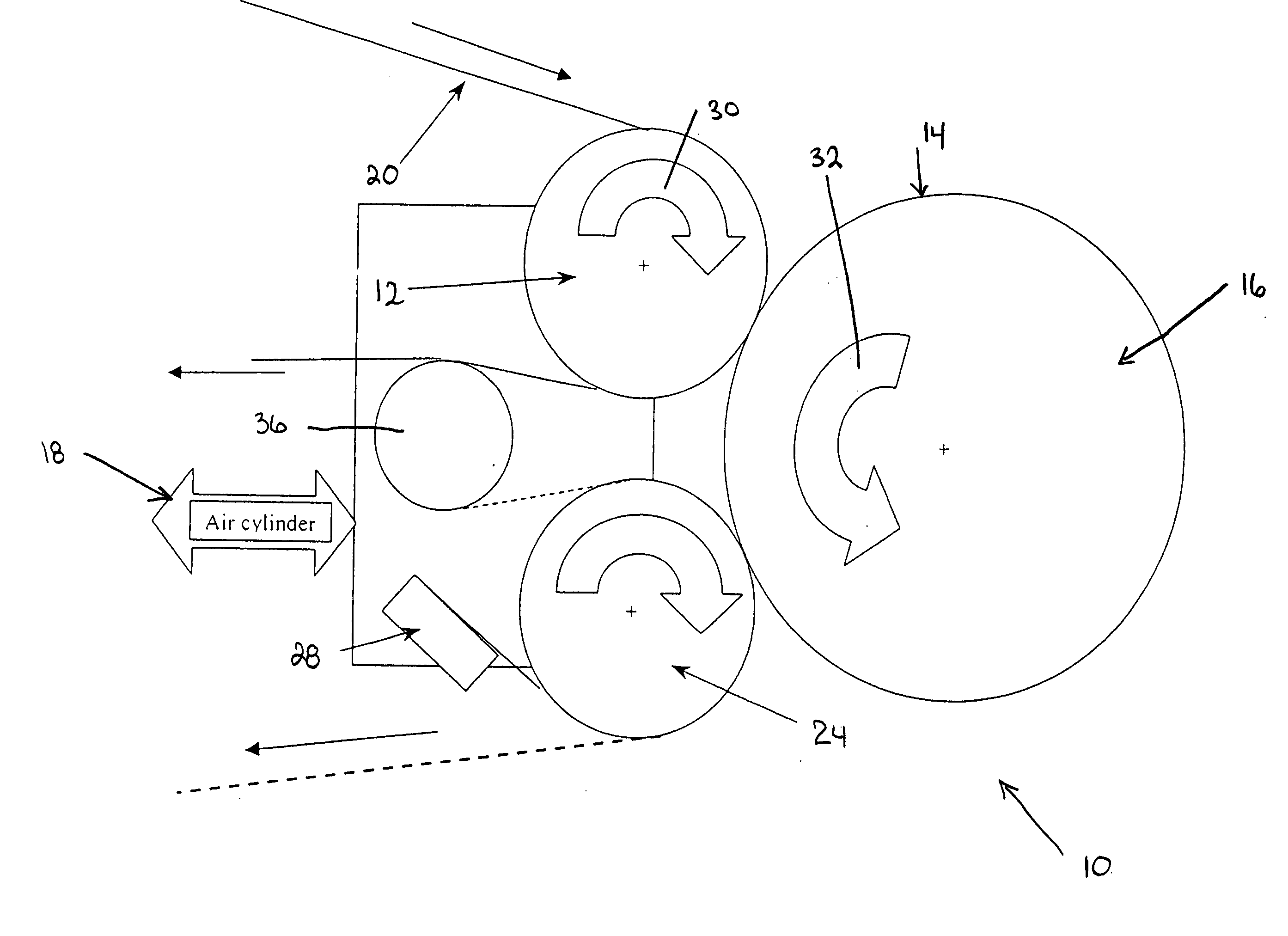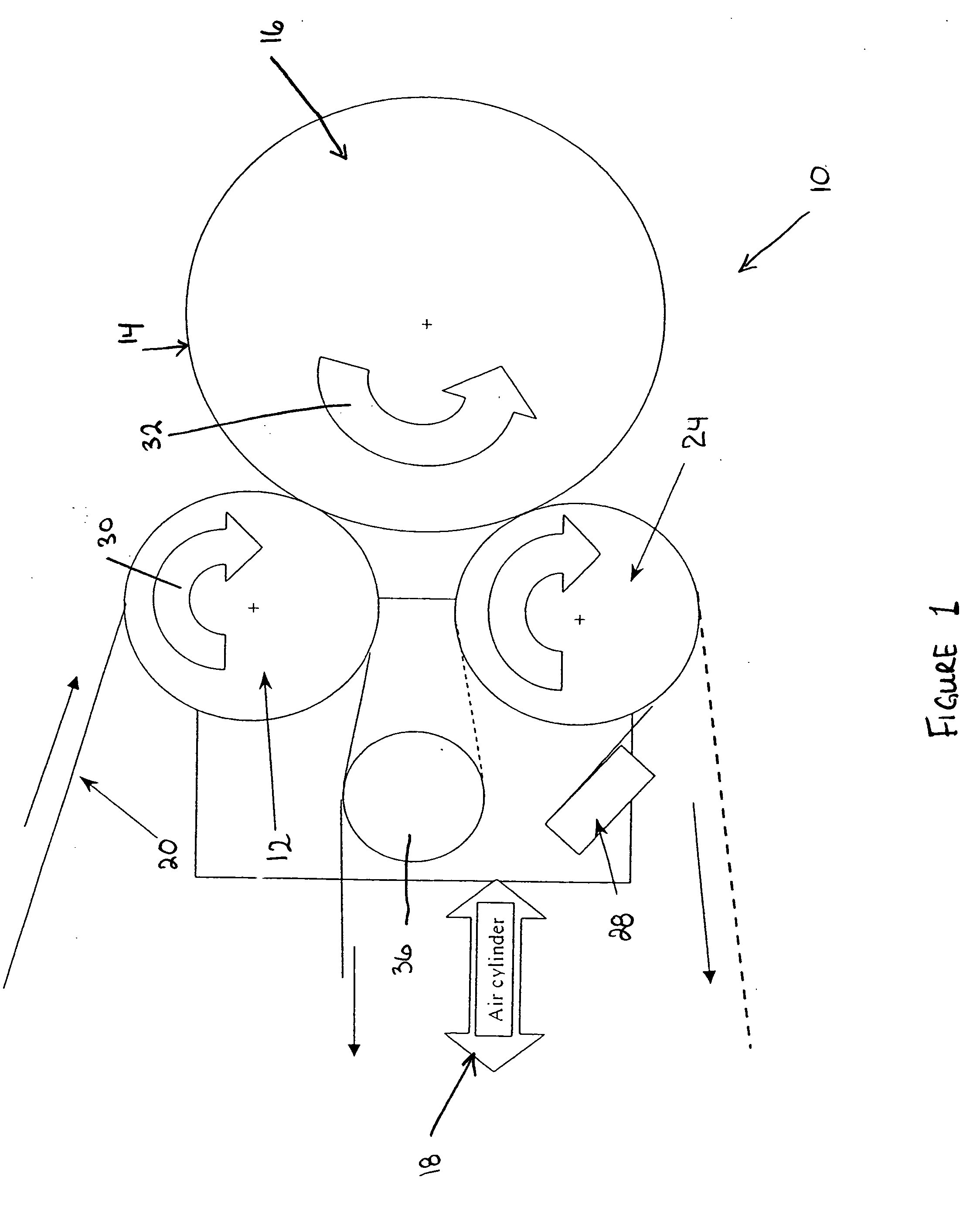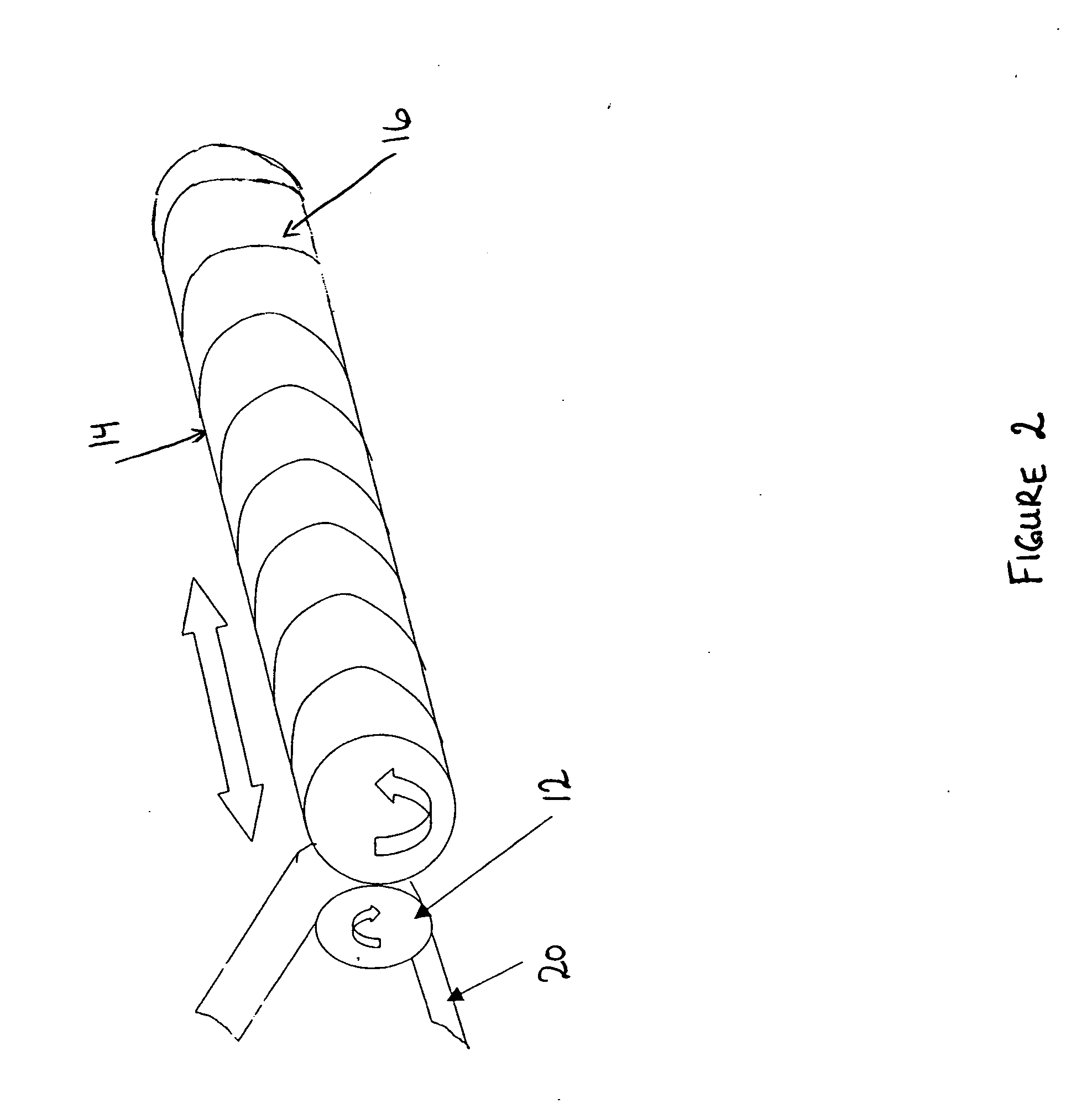Apparatus and method for thermally developing flexographic printing sleeves
- Summary
- Abstract
- Description
- Claims
- Application Information
AI Technical Summary
Benefits of technology
Problems solved by technology
Method used
Image
Examples
Embodiment Construction
[0037] The present invention relates to an improved thermal development apparatus and a method of using the apparatus to remove non-crosslinked polymer from an imaged surface of a relief image printing element during a process for manufacturing the relief image printing element.
[0038] A flexographic printing element is produced from a photocurable printing blank by imaging the photocurable printing blank to produce a relief image on the surface of the printing element. This is generally accomplished by selectively exposing the photocurable material to actinic radiation, which exposure acts to harden or crosslink the photocurable material in the irradiated areas.
[0039] The photocurable printing blank contains one or more layers of an uncured photocurable material on a suitable backing layer. The photocurable printing blank can be in the form of either a flat, planar element or as a cylindrical printing element.
[0040] The printing element is selectively exposed to actinic radiation...
PUM
 Login to View More
Login to View More Abstract
Description
Claims
Application Information
 Login to View More
Login to View More - R&D
- Intellectual Property
- Life Sciences
- Materials
- Tech Scout
- Unparalleled Data Quality
- Higher Quality Content
- 60% Fewer Hallucinations
Browse by: Latest US Patents, China's latest patents, Technical Efficacy Thesaurus, Application Domain, Technology Topic, Popular Technical Reports.
© 2025 PatSnap. All rights reserved.Legal|Privacy policy|Modern Slavery Act Transparency Statement|Sitemap|About US| Contact US: help@patsnap.com



